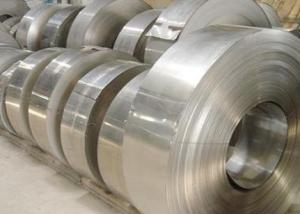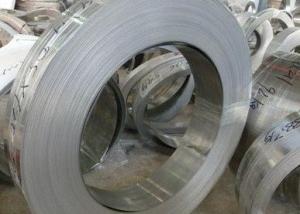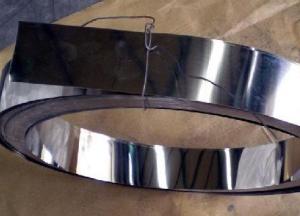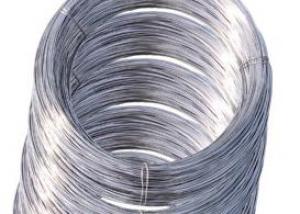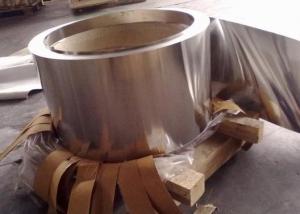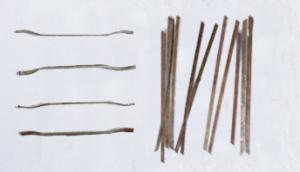316L Stainless Steel Strips
- Loading Port:
- China Main Port
- Payment Terms:
- TT or LC
- Min Order Qty:
- 1 Ton m.t.
- Supply Capability:
- 2000 Tons Per Month m.t./month
OKorder Service Pledge
OKorder Financial Service
You Might Also Like
316L Stainless Steel Strips
1. Chemical composition
|
C |
Si |
Mn |
P |
S |
Ni |
Cr |
|
Max0.03 |
max1.00 |
max2.00 |
max0.045 |
max0.03 |
10.00-14.00 |
16.00-18.00 |
2. Mechanical properties
|
Yield Strength |
Tensile |
Elongation |
Hardness (HV) |
Hardness (HRB) |
|
≥175 |
≥480 |
≥40 |
≤200 |
≤90 |
3. Standard: AISI, ASTM, GB, EN, DIN, JIS
4. Surface: 2B, NO.1, BA, NO.4, Hairline, SB, Mirror finish, Anti-skid, Cherkered etc.
5. Size: Thickness: 0.3-3mm (cold rolled), 3-40mm (hot rolled)
Width: 18-600mm.
Length: As customers' request.
6. MOQ: 1 Ton
7. Payment terms: T/T or L/C
8. Packing: Seaworthy package with wooden or Iron pallets with the paper and the steel strip, or as customers' request.
9. Delivery time: Usually about 7 days after we confirming the order, or according to your quantity.
If you have any question or demand, pls feel free to contact me.
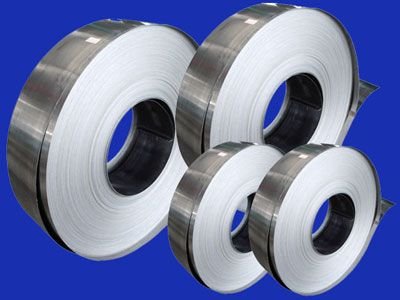
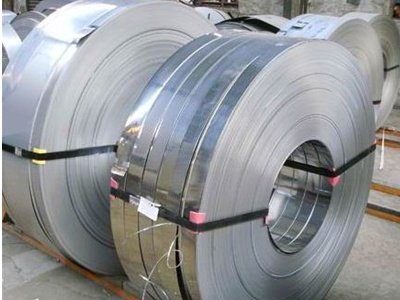

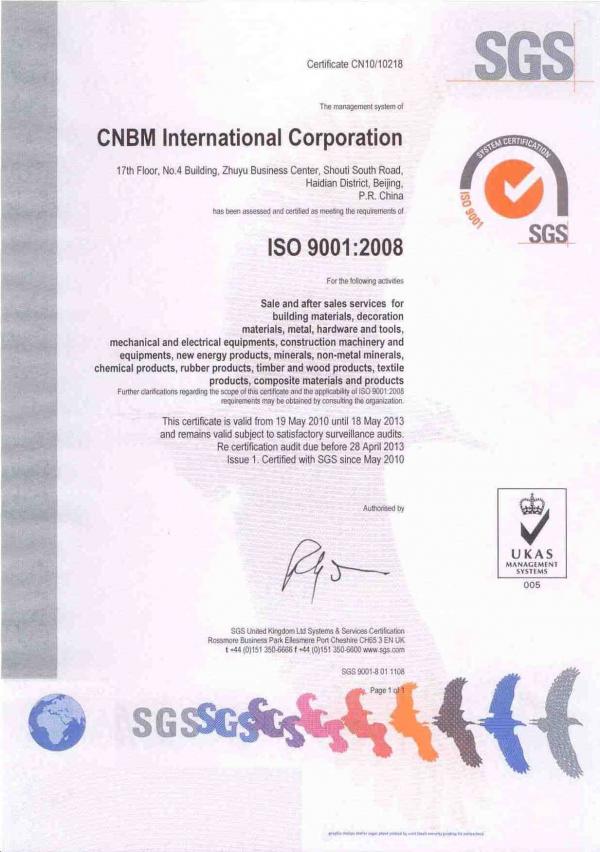
- Q:What are the different methods of cutting stainless steel wire?
- There are several methods used for cutting stainless steel wire, each with its own advantages and limitations. 1. Wire Cutters: This is the most common method of cutting stainless steel wire. Wire cutters are handheld tools with sharp blades that can easily slice through the wire. They are relatively inexpensive and can be used for both small and larger gauge wires. However, they may not be suitable for very thick or hardened stainless steel wires. 2. Metal Shears: Metal shears are also commonly used for cutting stainless steel wire. These tools have long blades and are designed to cut through metal with ease. Metal shears can handle thicker and harder stainless steel wires compared to wire cutters. However, they may be more expensive and require more force to operate. 3. Angle Grinder: An angle grinder equipped with a cutting disc can also be used to cut stainless steel wire. This method is suitable for thicker wires and provides a clean and precise cut. However, angle grinders can be expensive and require proper safety precautions, such as wearing protective goggles and gloves. 4. Laser Cutting: Laser cutting is a highly precise and efficient method for cutting stainless steel wire. It uses a focused laser beam to melt and vaporize the material, resulting in a clean and accurate cut. Laser cutting is suitable for both thin and thick wires, and it can cut through hardened stainless steel. However, this method requires specialized equipment and is typically used in industrial settings. 5. Waterjet Cutting: Waterjet cutting is another precise method for cutting stainless steel wire. It uses a high-pressure jet of water mixed with an abrasive material to cut through the wire. Waterjet cutting is suitable for various wire thicknesses and provides a smooth and burr-free cut. However, it also requires specialized equipment and is commonly used in industrial applications. Overall, the method of cutting stainless steel wire depends on factors such as wire thickness, hardness, precision requirements, and available equipment. It is important to select the appropriate method based on these factors to ensure a clean and accurate cut.
- Q:Can stainless steel wire be used for woven wire mesh?
- Yes, stainless steel wire can be used for woven wire mesh. Stainless steel is known for its high strength, durability, and corrosion resistance, making it an excellent choice for various applications, including woven wire mesh. Its properties allow for a stable and long-lasting mesh structure that can withstand harsh environments and provide reliable filtration or protection.
- Q:Is stainless steel wire suitable for architectural applications?
- Yes, stainless steel wire is highly suitable for architectural applications. Stainless steel is a durable and corrosion-resistant material, making it perfect for outdoor structures, decorative features, and architectural elements. Its strength and versatility allow for a wide range of applications, including wire mesh for facades, balustrades, handrails, and safety barriers. Stainless steel wire also offers an aesthetically pleasing appearance, with various finishes and weaves available to complement different architectural styles. Additionally, stainless steel wire is low maintenance, easy to clean, and can withstand extreme temperatures, making it an ideal choice for both interior and exterior architectural projects.
- Q:How does stainless steel wire perform in high-stress bending applications?
- The outstanding performance of stainless steel wire in high-stress bending applications is widely recognized. This is attributed to its unique composition and properties, which enable it to withstand significant amounts of stress while maintaining its shape and structural integrity. One of the main factors contributing to the excellent performance of stainless steel wire in high-stress bending applications is its high tensile strength. By virtue of being an alloy containing chromium, stainless steel possesses exceptional strength and resistance to corrosion. This high tensile strength empowers stainless steel wire to endure heavy loads and bending forces without fracturing or deforming. Moreover, stainless steel wire exhibits remarkable ductility, allowing it to stretch and bend without breaking. This attribute is crucial in high-stress bending applications as it enables the wire to withstand repeated bending without failure. Stainless steel wire can endure bending forces without becoming brittle or losing its strength, which makes it highly suitable for applications involving frequent or extreme bending. Furthermore, stainless steel wire displays exceptional resistance to wear and tear. It can withstand friction, abrasion, and other external factors that could potentially damage the wire. This durability is particularly important in high-stress bending applications where the wire is subject to constant bending and twisting. Another advantage of stainless steel wire is its resistance to corrosion. The presence of chromium in stainless steel forms a protective oxide layer on the wire's surface, preventing rust and corrosion. This corrosion resistance ensures that the wire remains strong and reliable even in harsh environments or when exposed to moisture. In conclusion, stainless steel wire excels in high-stress bending applications due to its high tensile strength, ductility, resistance to wear and tear, and corrosion resistance. It can withstand heavy loads, repeated bending, and harsh conditions without compromising its structural integrity. Therefore, stainless steel wire is often the preferred choice for applications that require reliable and durable materials in high-stress bending situations.
- Q:What is brushed stainless steel?
- Generally speaking, most of the stainless steel surface treatment suitable for throwing Matt, bright and mirror, there are very few suitable for drawing, these are suitable for drawing stainless steel, commonly known as "brushed stainless steel."
- Q:Can stainless steel wire be used for safety wire?
- Absolutely! Safety wire can definitely utilize stainless steel wire. The strength, durability, and corrosion resistance of stainless steel wire make it an exceptional option for safety wire applications. Typically, safety wire is employed to secure fasteners and prevent them from becoming loose or vibrating loose. Thanks to the impressive tensile strength of stainless steel wire, it is capable of withstanding the necessary tension for safety wire purposes, thereby offering a dependable and secure fastening solution. What's more, stainless steel wire's ability to resist corrosion means that it will remain intact even in challenging environments, thus further enhancing its suitability for safety wire usage.
- Q:304 stainless steel wire want to increase its deformation ability, how should heat treatment?
- 304, stainless steel wire cold deformation, can increase strength, improve deformation resistanceConversely, a solid solution treatment with a temperature of 1050 degrees can be softened by quenching and heating of the protective gas
- Q:What is the quality of stainless steel taps, sleeve wire is best to use? What tools are best to use?
- Stainless steel with special alloy steel taps, sleeve wire best use, T12 best use!
- Q:What is the cost of stainless steel wire compared to other types of wire?
- The cost of stainless steel wire can vary depending on various factors such as the grade, diameter, and quantity required. Generally, stainless steel wire tends to be more expensive compared to other types of wire such as carbon steel or galvanized wire. This is primarily due to the higher cost of raw materials and the added benefits that stainless steel offers. Stainless steel wire is known for its corrosion resistance, durability, and ability to withstand high temperatures, which makes it suitable for a wide range of applications in industries such as construction, automotive, and aerospace. While the initial cost of stainless steel wire may be higher, its long-term performance and durability often make it a cost-effective choice in the long run. It is important to consider the specific requirements of your project and consult with suppliers to get accurate pricing information for stainless steel wire and compare it with other options to make an informed decision.
- Q:Can stainless steel wire be used for wire rope end fittings?
- Indeed, the utilization of stainless steel wire is suitable for wire rope end fittings. Renowned for its remarkable strength, durability, and resistance against corrosion, stainless steel proves to be an exceptional option for wire rope fittings. The assortment of these fittings often encompasses terminations such as loops, thimbles, sleeves, or swage fittings. These fittings serve the purpose of firmly securing the wire rope while acting as a connecting point for additional components. By employing stainless steel wire rope end fittings, one can ensure a steadfast and trustworthy attachment, even in demanding environments or applications that necessitate elevated tensile strength.
1. Manufacturer Overview |
|
|---|---|
| Location | Shandong,China |
| Year Established | 2005 |
| Annual Output Value | Above US$5.3 Million |
| Main Markets | Europe, China |
| Company Certifications | ISO9001:2000 |
2. Manufacturer Certificates |
|
|---|---|
| a) Certification Name | |
| Range | |
| Reference | |
| Validity Period | |
3. Manufacturer Capability |
|
|---|---|
| a)Trade Capacity | |
| Nearest Port | Tian Jin |
| Export Percentage | 30% |
| No.of Employees in Trade Department | 40 People |
| Language Spoken: | English;Chinese |
| b)Factory Information | |
| Factory Size: | Above 50,000 square meters |
| No. of Production Lines | Above 8 |
| Contract Manufacturing | OEM Service Offered;Design Service Offered |
| Product Price Range | Average |
Send your message to us
316L Stainless Steel Strips
- Loading Port:
- China Main Port
- Payment Terms:
- TT or LC
- Min Order Qty:
- 1 Ton m.t.
- Supply Capability:
- 2000 Tons Per Month m.t./month
OKorder Service Pledge
OKorder Financial Service
Similar products
New products
Hot products
Related keywords
